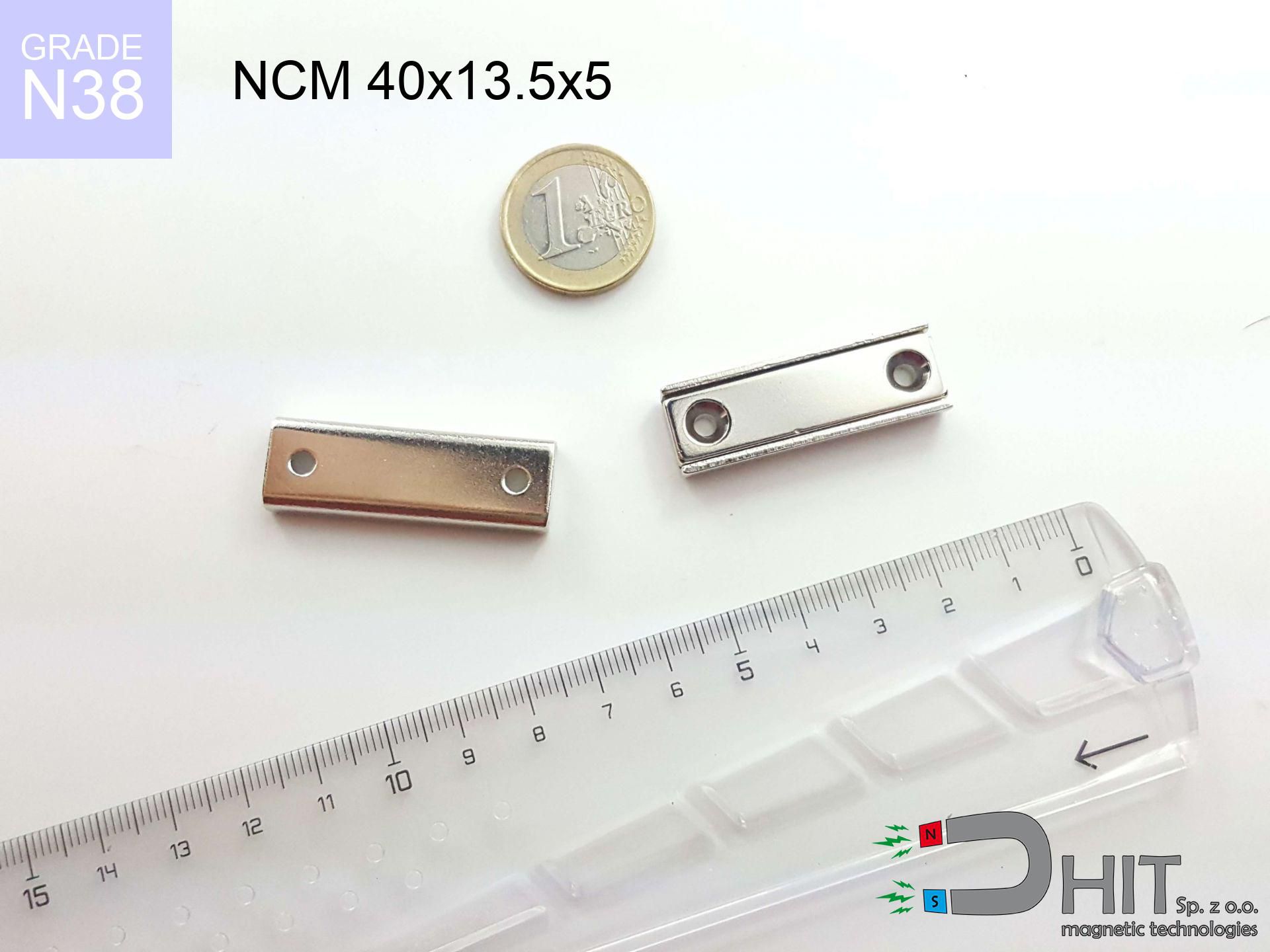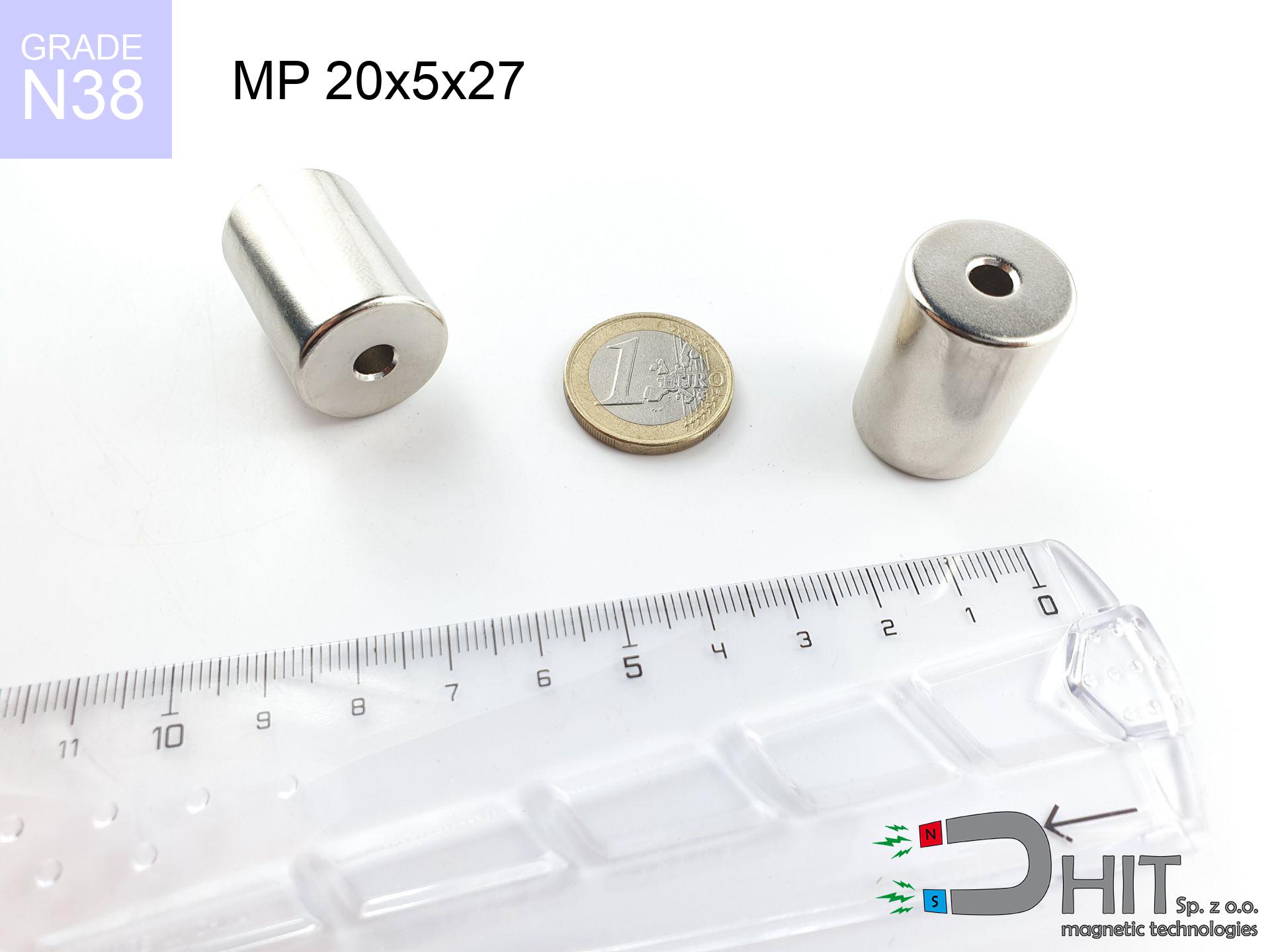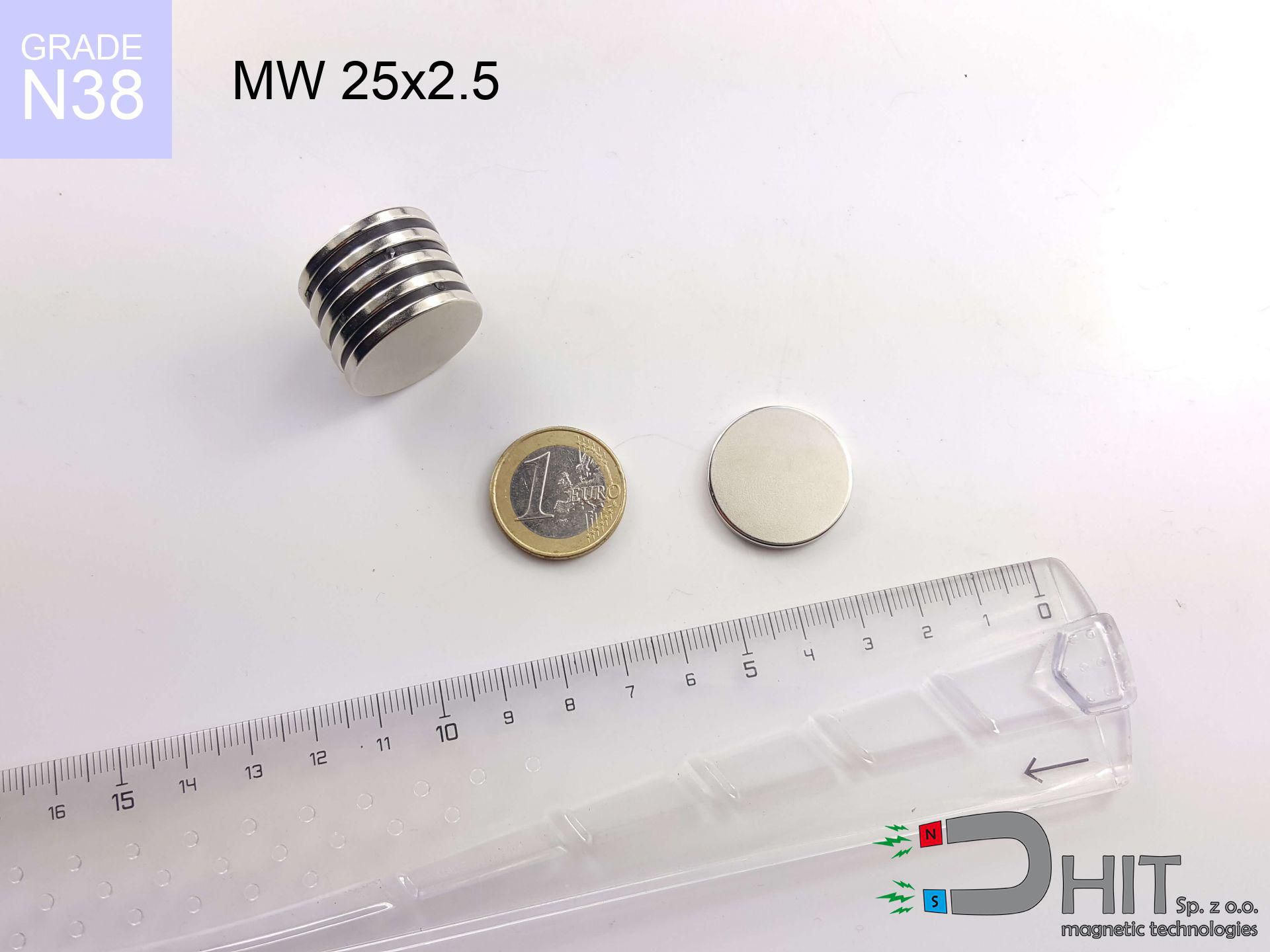NCM 40x13.5x5 / N38 - channel magnetic holder
channel magnetic holder
Catalog no 360489
GTIN: 5906301814887
Diameter Ø [±0,1 mm]
40 mm
Height [±0,1 mm]
13.5 mm
Weight
18.4 g
Magnetization Direction
↑ axial
Load capacity
17 kg / 166.71 N
Coating
[NiCuNi] nickel
14.19 ZŁ with VAT / pcs + price for transport
11.54 ZŁ net + 23% VAT / pcs
bulk discounts:
Need more?Want to negotiate?
Call us
+48 22 499 98 98
or get in touch by means of
request form
through our site.
Specifications as well as form of a neodymium magnet can be analyzed using our
force calculator.
Orders placed before 14:00 will be shipped the same business day.
NCM 40x13.5x5 / N38 - channel magnetic holder
Magnetic properties of material N38
Physical properties of NdFeB
Shopping tips
Advantages and disadvantages of neodymium magnets NdFeB.
Apart from their notable magnetism, neodymium magnets have these key benefits:
- They virtually do not lose power, because even after ten years, the performance loss is only ~1% (in laboratory conditions),
- They protect against demagnetization induced by ambient electromagnetic environments effectively,
- Thanks to the polished finish and silver coating, they have an aesthetic appearance,
- Magnetic induction on the surface of these magnets is impressively powerful,
- Neodymium magnets are known for exceptionally strong magnetic induction and the ability to work at temperatures up to 230°C or higher (depending on the geometry),
- With the option for customized forming and precise design, these magnets can be produced in numerous shapes and sizes, greatly improving design adaptation,
- Wide application in advanced technical fields – they serve a purpose in hard drives, electromechanical systems, healthcare devices or even sophisticated instruments,
- Compactness – despite their small size, they generate strong force, making them ideal for precision applications
Disadvantages of neodymium magnets:
- They can break when subjected to a powerful impact. If the magnets are exposed to shocks, they should be placed in a metal holder. The steel housing, in the form of a holder, protects the magnet from cracks while also increases its overall strength,
- High temperatures may significantly reduce the strength of neodymium magnets. Typically, above 80°C, they experience permanent weakening in performance (depending on shape). To prevent this, we offer heat-resistant magnets marked [AH], capable of working up to 230°C, which makes them perfect for high-temperature use,
- They rust in a moist environment – during outdoor use, we recommend using sealed magnets, such as those made of plastic,
- Using a cover – such as a magnetic holder – is advised due to the difficulty in manufacturing threads directly in the magnet,
- Potential hazard due to small fragments may arise, when consumed by mistake, which is crucial in the protection of children. It should also be noted that minuscule fragments from these magnets might disrupt scanning once in the system,
- Due to the price of neodymium, their cost is above average,
Be Cautious with Neodymium Magnets
Neodymium magnetic are especially delicate, resulting in shattering.
Neodymium magnets are highly fragile, and by joining them in an uncontrolled manner, they will crumble. Neodymium magnets are made of metal and coated with a shiny nickel, but they are not as durable as steel. In the event of a collision between two magnets, there may be a scattering of fragments in different directions. Protecting your eyes is crucial in such a situation.
Make sure not to bring neodymium magnets close to the TV, wallet, and computer HDD.
The strong magnetic field generated by neodymium magnets can damage magnetic media such as floppy disks, video tapes, HDDs, credit cards, magnetic ID cards, cassette tapes, etc. devices. They can also damage videos, televisions, CRT computer monitors. Remember not to place neodymium magnets close to these electronic devices.
Maintain neodymium magnets away from children.
Not all neodymium magnets are toys, so do not let children play with them. Small magnets pose a serious choking hazard or can attract to each other in the intestines. In such cases, the only solution is to undergo surgery to remove the magnets, and otherwise, it can even lead to death.
The magnet is coated with nickel. Therefore, exercise caution if you have an allergy.
Studies clearly indicate a small percentage of people who suffer from metal allergies such as nickel. An allergic reaction often manifests as skin redness and rash. If you have a nickel allergy, you can try wearing gloves or simply avoid direct contact with nickel-plated neodymium magnets.
Avoid bringing neodymium magnets close to a phone or GPS.
Intense magnetic fields generated by neodymium magnets interfere with compasses and magnetometers used in navigation, as well as internal compasses of smartphones and GPS devices.
Neodymium magnets are the strongest magnets ever created, and their power can surprise you.
To use magnets properly, it is best to familiarize yourself with our information beforehand. This will help you avoid significant harm to your body and the magnets themselves.
Neodymium magnets are primarily characterized by their significant internal force. They attract to each other, and any object that comes in their way will be affected.
Magnets will attract each other within a distance of several to about 10 cm from each other. Remember not to put fingers between magnets or in their path when they attract. Magnets, depending on their size, are able even cut off a finger or alternatively there can be a serious pressure or even a fracture.
Neodymium magnets can become demagnetized at high temperatures.
Although magnets have shown to retain their effectiveness up to 80°C or 175°F, this temperature may vary depending on the type of material, shape, and intended use of the magnet.
People with pacemakers are advised to avoid neodymium magnets.
Neodymium magnets produce strong magnetic fields that can interfere with the operation of a heart pacemaker. However, if the magnetic field does not affect the device, it can damage its components or deactivate the device when it is in a magnetic field.
Dust and powder from neodymium magnets are flammable.
Avoid drilling or mechanical processing of neodymium magnets. If the magnet is crushed into fine powder or dust, it becomes highly flammable.
Exercise caution!
In order for you to know how powerful neodymium magnets are and why they are so dangerous, read the article - Dangerous strong neodymium magnets.






![SM 32x300 [2xM8] / N52 - magnetic separator SM 32x300 [2xM8] / N52 - magnetic separator](https://cdn3.dhit.pl/graphics/products/sm-32x300-2xm8-luf.jpg)

